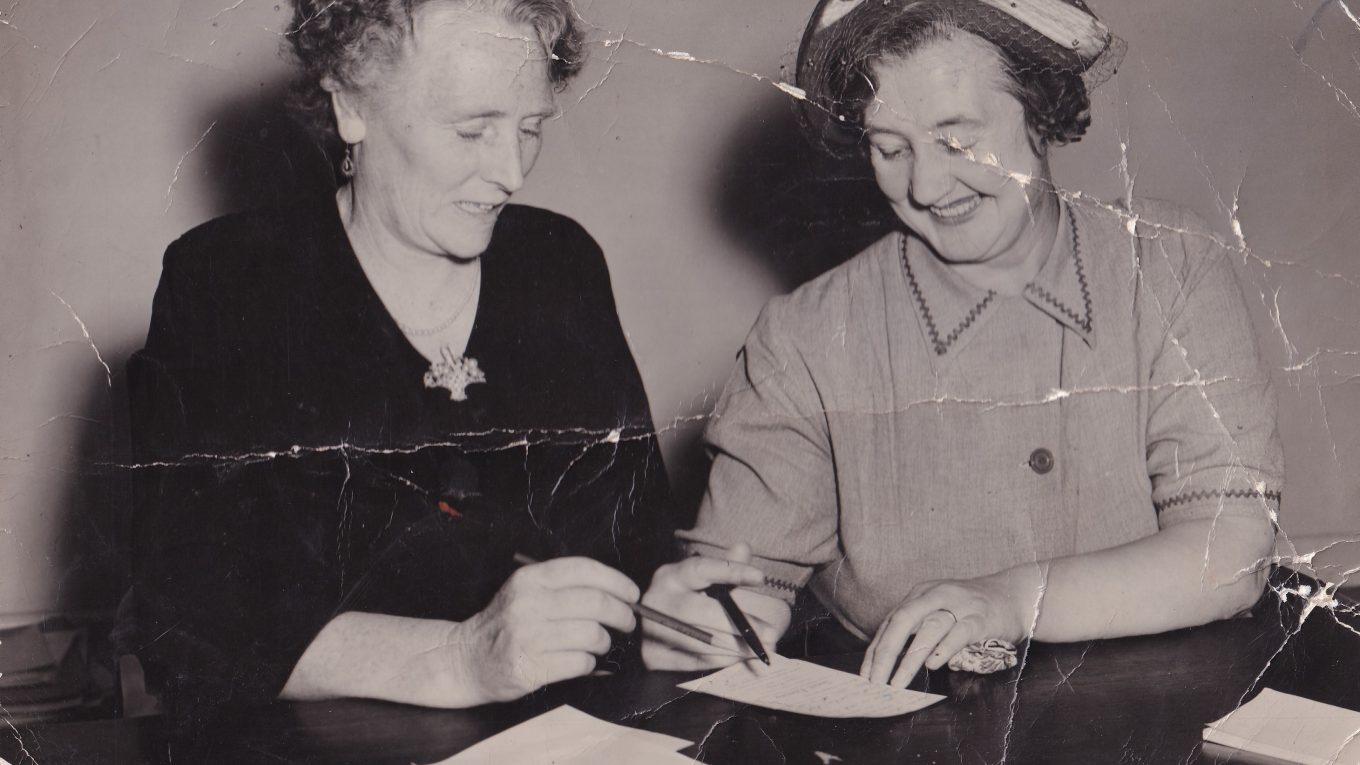Unity and Strength: The legacy of the Wonthaggi Miners’ Women’s Auxiliary
The Wonthaggi Miners’ Women’s Auxiliary was a plucky group of firebrand women. A trailblazing collective that delivered an amazing legacy for the district but also played a nationally significant role in the union and strike movements. They advocated for women’s rights, and in doing so, they demonstrated the political clout and influence women could have on public opinion and changing government policy.
Audio 1: Elsie Hamilton (interviewed by Lyn Chambers) discussing the founding of the Wonthaggi Miners Women's Auxiliary. [Wonthaggi & District Historical Society, Oral History Recording OH-0014A, recorded 18th July 1985]
The Wonthaggi Miners’ Women’s Auxiliary came into existence because of the five-month Miner’s strike of 1934, which gained national attention. But the dedicated work of the group gifted Wonthaggi long-term benefits such as improved amenities, social support programs and infrastructure. They played a pivotal role in lobbying for the Maternity Ward at the Wonthaggi Hospital and championed a range of other social justice causes.
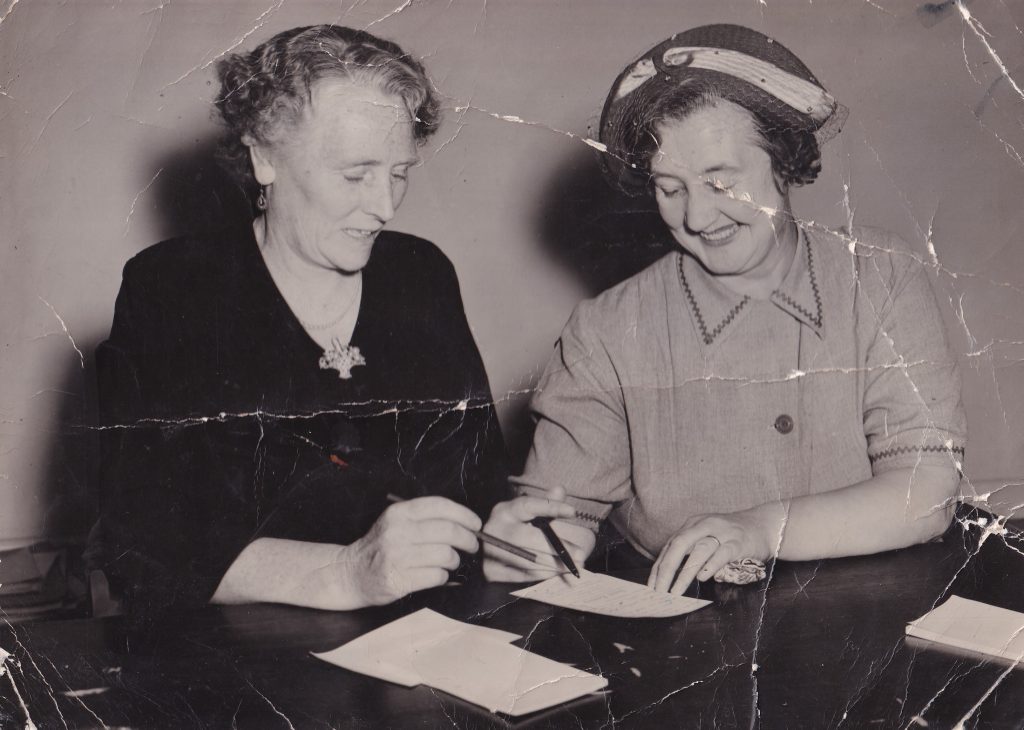
The group typified the enviable community spirit and collective goodwill that Wonthaggi’s miners, families, and community possessed. Their members also embraced a bloody-minded but good-humoured tenacity that typified the working women of the district.
Before we proceed, it’s important to acknowledge the big fat elephant in the room. Namely, my sex. I am an affluent, white, middle-aged man. I’ve been very privileged to have received a good public education. I've got a job at a swanky well-to-do University and I have certainly benefited from the patriarchal system.
So, what knowledge do I have of the struggles and obstacles those women would have faced? Indeed, what do I know of the daily toil and struggle of the lot of a Wonthaggi coal miner? What right do I have to talk to those experiences and achievements?
All very valid questions, I’d suggest.
My only response is that I have the utmost respect for the work and legacy of those firebrand women. Their story and achievements are both fascinating and hugely significant. Many others have communicated their exploits before, but I firmly believe their contribution is a story worth acknowledging over and over again. Having lived in Wonthaggi for most of life, also I’ve certainly benefited from the wonderful and much-needed amenities they delivered and the communal fabric they helped create.
In relation to the miner’s lot, I know only what I’ve read and that which has been passed down anecdotally about the experience my grandfather and great-grandfather had working the Wonthaggi Mine. The back-breaking work, the injuries they sustained, and the struggles they and their partners endured certainly set the stage for the privileges I have enjoyed.
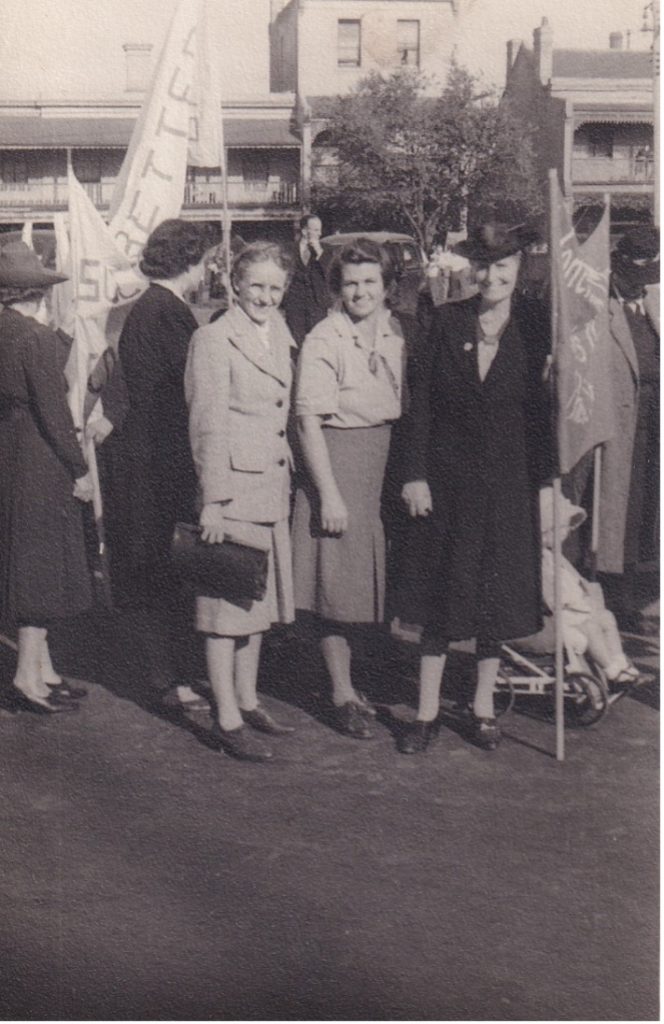
The Wonthaggi Miners’ Women’s Auxiliary was indeed a ground-breaking organisation. It was revolutionary in terms of its vestiges and influence. It was the first Women’s Auxiliary of a mining union in Australia, and I’d speculate one of the first anywhere in the world.
As mentioned, the group was established as a result of the infamous miner’s strike of 1934. The strike was long and bitterly fought. Lasting five months, it took an enormous toll on the working families and community of Wonthaggi.
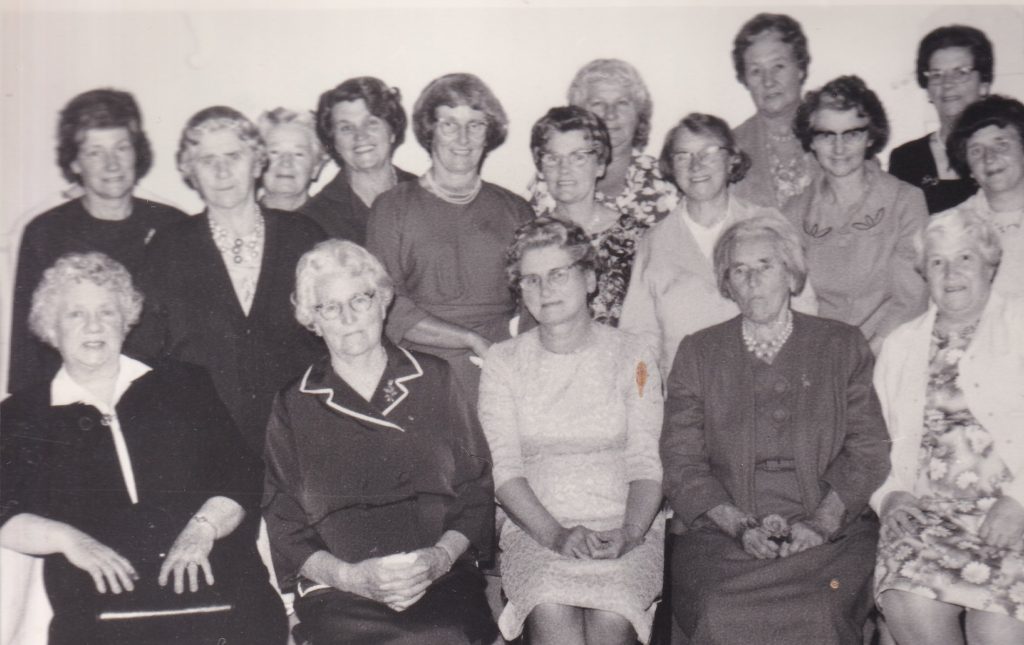
The years leading up to the strike had seen a huge deterioration in employment levels, wages, as well as safety conditions at the Mine. Many factors were at play. The Depression had massively reduced the demand for coal. Victoria had an ultra-conservative government, led by Stanley Argyle, who had come to power with a landslide win in 1932. The Wonthaggi Miner’s Union branch had also become far more left-leaning and militant under the influence of Idriss Williams, who had been elected as Vice President in 1932.
As we well know – you can’t achieve true greatness without a nemesis. All good stories need villain and the anti-hero of this story is one Robert Gordan Menzies. A man, as we all know, who would go on be become Australia’s longest-serving Prime Minister.
Before that, Menzies was cutting his teeth in Victorian state politics. At the time of the strike, he was Deputy Premier and the Minister for Railways, which put the operations of the Wonthaggi State Coal Mine within his remit.
Under his watch, Wonthaggi’s Mine Management, led by the new General Manager John McLeish, pursued an agenda of cost-cutting and economic rationalisation. 1932 saw pay rates reduce by a third. 354 miners were retrenched, and another 54 were dismissed for ‘inefficiency’. Menzies repeatedly publicly stated that the mine may need to close due to the losses it was incurring.
Menzies and McLeish were enemy number one for the Union and for the working families of the Wonthaggi community.
Dissatisfaction caused by low-wages, bad working conditions, and the autocratic management style boiled over when seven wheelers were dismissed from Dudley Shaft.
“Stop work” action was formally called on the 6th of March 1934. A mass meeting of miners and townspeople took place early in the dispute. Shops and hotels closed from 10am to 1pm. Three thousand people packed the streets and filled the Union and Plaza Theatres.
In previous strikes, Wonthaggi’s miners had received significant financial help from the miners of New South Wales. However, due to the Depression, they knew that kind of support was unlikely to come.
As such, the Wonthaggi Coal Miner’s Union[1] assumed control of organising the relief efforts for the industrial action. They focussed on mobilising local support. In a first for Australian union history, they formed a ‘Broad Committee’, comprising all sections of the union.
That committee was responsible for relief funds, entertainment, and propaganda and operated from the Miners’ Union Theatre.
The various sub-committees provided wide-ranging support to the striking miners and their families.
Food allocations were distributed food twice a week. The details of which were reported by the Powlett Express on a weekly basis. A typical report reads:
“Tuesday:- 1250 large loaves of bread, 426 rabbits, 850 tins of jam, 71 dozen bunches of vegetables;
Friday:- 1250 large loaves of bread, 7000 pounds of meat, 720 tins of Golden Syrup, onions and assorted vegetables.- 'Strike food allocations' in Powlett Express, 8 May 1934, p.8
The vegetables distributed included potatoes, pumpkins, carrots and parsnips. On Fridays, fish was handed out instead of meat.
Chopped firewood was made available. Hairdressing and barbering saloons were established. As was a boot repair depot. All were hosted at the Union Theatre. Wonthaggi’s farmers, shopkeepers and businesses donated generously.
The women of the town – many of whom were married to striking miners – were actively involved in the relief and support effort from the start. They sewed clothing and assisted with food distribution. They also played a pivotal role in the fundraising effort, raising money for food and cloth. They also focused on providing clothing for babies and expectant mothers. Concerts were coordinated to generate funds but also to entertain the people who waited, gunny-bag in hand, for their weekly allocation of rations.
The formal involvement of a women’s committee in support of the industrial action was formalised three months into the strike.
At the June elections, a female-based broad committee was formed. First known as the ‘Ladies’ Relief Committee’, its remit included cooperating with the men in providing support, especially to ensure support for children and mothers. The group was initially made up of thirty-five founding members. The first committee had Agnes Chambers as President, Meg Foster as Vice President, and Helen Hamill as Secretary.
As the inaugural President, Mrs Chambers issued an official statement on behalf of the Committee:
the women of Wonthaggi are firmly behind their husbands in this struggle. We women have for the past two years seen our husbands’ pay reduced by more than a third…
If our men quietly accept these reductions without further protest, where will they end? …
Our men have stood solidly in this great struggle, and the Government, realising that it cannot break the spirit of the men, now turns and threatens to take our homes from us. The Government threatens to close the mine permanently…
The dispute has now been in progress 17 weeks, and it would appear that we have a long and dreary winter in front of us, but with the help of the women of Australia we can hold out.
Cited in Cochrane, P, ‘The Wonthaggi Coal Strike, 1934’, Labour History, no. 27, 1974, p. 28
Less than a week after its formation, the Auxiliary had helped more than 100 families. Each day, the number of ‘necessitous’ cases under their care grew.
Education featured heavily in their activities. Members of the Committee set about enlightening other women on mine and political issues.
An early aim was to stop the government from enflaming the concerns of miners’ wives as a way to break prolonged strike action as had been done in the past. Women’s Auxiliary members began to speak and advocate at union and public meetings across the state. They travelled to Melbourne and delivered impassioned addresses at factory gate rallies. They explained the strike issues and asked for assistance from union members of other sectors.
By the second week of July, Menzies agreed to negotiate.
Management agreed to the immediate recognition of pit-top committees and the reinstatement of the wheelers whose dismissal provoked the strike. Menzies also proposed that the reinstatement of two men who had subsequently been dismissed for insubordination be negotiated once the miners were back at work – a palatable concession for most miners.
The women’s independent organisation and their willingness to persist further throughout the winter was a major factor in resisting efforts to call off the strike before the miner’s demands had been met.
There is a wonderful poem titled “The Wonthaggi Strike”, written in 1934 by Danny McDonald that encapsulates the important role these women played in the strike:
They gave us meat and veggies
With dripping, bread and jam,
A distribution twice a week
We didn't give a damn.We then sent women down to Town
To gain more sympathisers.
The papers then had to admit
We had good organisers.The Government asked a Conference
We soon arranged a date,
And after twenty weeks of strife
They did capitulate.
Through their involvement in the Auxiliary, members began to expand their skills and confidence. Throughout the strike they had conducted meetings, organised logistics, ran sophisticated advocacy campaigns and coordinated public speaking activities.
The efforts of those firebrands was creating broader appreciation for the contributions women could make outside of the domestic domain. Importantly, Wonthaggi’s women were contributing to a nationwide political movement.
After the 1934 strike, the group formally adopted its longstanding title as the Wonthaggi Miners’ Women’s Auxiliary. It was the first women’s group of its kind in the country and inspired union wives to form similar auxiliaries in coal coalfields across the country and throughout the world.
In September 1937, the Union paper The Common Cause ran an article on Women’s Auxiliaries entitled ‘Wonthaggi Branch Statement’. It reports:
“The Wonthaggi Women’s Auxiliary already has about 50 paying members, who are paying sixpence per month to establish a fighting fund.
Here are six reasons why Women’s Auxiliaries are necessary:
∞ Because, as women, we are vitally concerned in the struggle of our menfolk;
∞ Because we women have to administrate our domestic homes in accordance with the standard of wages our menfolk receive;
∞ Because our social standard is dependent upon the standard of wages and conditions our menfolk labour under;
∞ Because we know that unity is strength, therefore, unity means organised expression and a combining of expressed opinion – strength means might of organisation, the will to win and raise the living standard of the working class;
∞ Because we are conscious of the part women can play in the broad struggles of the workers;
∞ Because we should realise the need to stand shoulder to shoulder with our menfolk and that women are loyal fighters in the class struggle, fully realising that women are better organisers and more diplomatic administrators in supplying the people with their needs.”
- Helen Hamill, Secretary
In the following years, the Women’s Auxiliary became a leading force in fighting for various women’s amenities in the town and the surrounding district.
As time went by, their activism became more overt. Social justice was a primary focus. They advocated for the importance of women being able to assert their independence.
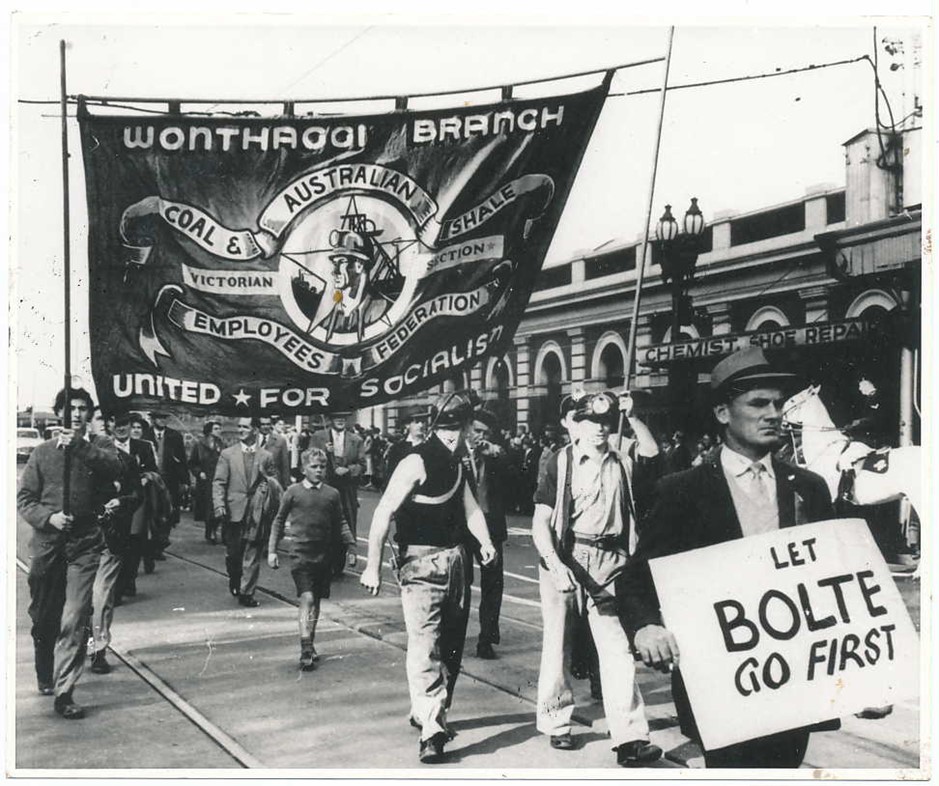
They lobbied hard and long for a maternity wing at the Miners’ Hospital. When it was finally built, the wing was named after Agnes Chambers in recognition of the role the Auxiliary had played in its establishment.
The Auxiliary also lobbied for the building of a comfort station (rest room) for mothers coming into town. They also advocated for a kindergarten and the establishment of a public library.
Through bloody-minded persistence and cooperation with other working committees all of those amenities were eventually obtained for Wonthaggi.
The Auxiliary also provided significant help to those in need over the years. Long before organised social work was established in the town, Auxiliary members made up food and clothing parcels to be given to those in distress.
It wasn’t all work and no play for the Auxiliary. The meetings could be feisty.
Audio 2: Elsie Hamilton (interviewed by Lyn Chambers) discussing the feisty arguments at Wonthaggi Miners Women's Auxiliary meetings. [Wonthaggi & District Historical Society, Oral History Recording OH-0014A, recorded 18th July 1985]
Aside from the serious political agenda they pursued, the group also had a rip-roaring social side to it. They curated a variety of cultural activities, sponsoring visits by emerging Australian writers such as Frank Hardy, Dorothy Hewitt, and others.
They organised art exhibitions and put on variety shows at the Union Theatre right until the closing of the mine in 1968. They hosted performances, went on day trips and picnics.
In closing, I argue that the legacy of the Wonthaggi Miner’s Women’s Auxiliary is hugely significant. Their activities combined achieving much-needed political and social change with colourful language and good humour. Their aid work and public advocacy helped the union win the strike of 1934. They also played a key supporting role in subsequent strikes. But more than that, those Wonthaggi women blazed a trail of feminist socialism that was hailed and followed across the country and the world. In doing so, they also left us many lasting vestiges that continue to enrich our community today.
[1] Australian Coal and Shale Employees Federation, Wonthaggi Branch
Works cited and photo/oral history credits
Works
- Cochrane, P., ‘The Wonthaggi Coal Strike, 1934’, Labour History, no. 27, 1974.
-
Editor, 'Strike food allocations' in Powlett Express, 8 May 1934, p.8
-
Hamill, H., 'Wonthaggi Branch Statement' in The Common Cause, September 1937.
- McDonald, Danny (1934) 'The Wonthaggi Strike' cited in Chambers, J. & L. (1982) It's on at the Union.
Images & oral histories
- Audio 1: Elsie Hamilton (interviewed by Lyn Chambers) discussing the founding of the Wonthaggi Miners Women's Auxiliary. [Wonthaggi & District Historical Society, Oral History Recording OH-0014A, recorded 18th July 1985]
- Audio 2: Elsie Hamilton (interviewed by Lyn Chambers) discussing the feisty arguments at Wonthaggi Miners Women's Auxiliary meetings. [Wonthaggi & District Historical Society, Oral History Recording OH-0014A, recorded 18th July 1985]
- Image 1: President of the W.M.W.A. Meg Foster with the Secretary Agnes Doig in the Union Theatre Meeting Room. [Wonthaggi & District Historical Society, Photograph P02766, circa late 1930's]
- Image 2: Members of W.M.Women's Auxiliary at a May Day March in Melbourne in the late 1940's. People (L to R): HAMILTON, Elsie; STIRTON, Nancy; and FOSTER, Meg. [Wonthaggi & District Historical Society, Photograph P02768, circa late 1940's]
-
Image 3: Members of the W.M.W.A in 1967. Back (L to R): VURLOW, Agnes; HUDSON, Hannah; McLEOD, Mavis; STIRTON, Nancy; HAMILTON, Elsie; CURRIE, Meg; HARMER, Bessie; ALLEN, Nell; DOIG, Agnes; CHAMBERS, Lyn; WALSH, Renie; PUGH, Peggy. Front (L to R): STEIN, Mary; FOSTER, Meg; HANSON, Jess; CHAMBERS, Agnes; HANNAFORD, Martha. [Wonthaggi & District Historical Society, Photograph P02772, 1967]
- Image 4: Wonthaggi Miners' Union and Miners' Women's Auxiliary members marching under the union banner at a May Day March in 1956. [Wonthaggi & District Historical Society, Photograph P00300, 1956]
